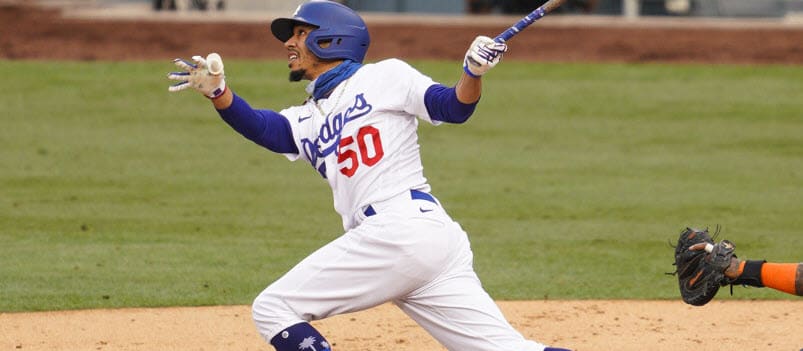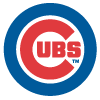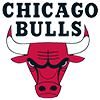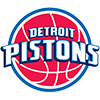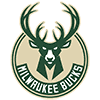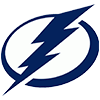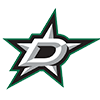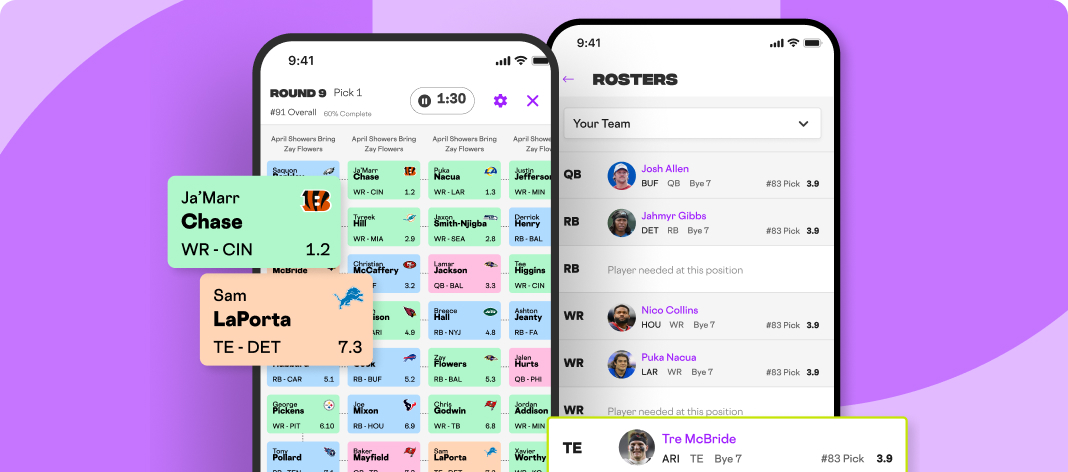Win the league, not the draft. Search the Z Files archives and that shows up as an article title at least once. Today, we're going to reinforce that notion, but from a different angle.
By means of review, target drafting is a common ploy. The idea is to use historical league results to set category targets sufficient to win the league. In full disclosure, I used to be a huge proponent of this approach and for the early years of the NFBC, I was the go-to guy for the previous season's average standings. Fast forward several years and I feel the tactic can do more harm than good.
That said, much like I stated with the flaws inherent in inflation a couple weeks ago, anything easing your mind at the draft table is a good thing. So long as you're aware of the pitfalls of target drafting and avoid them, more power to you.
One of the main reasons I'm no longer a fan of target drafting is that the procedure is so biased, you better not only hit them but blow them away. You're taking players for which you are more bullish than the market while others are drafting those for which you are bearish, well ahead of your ranking. How can you not crush your targets?
There are a couple more technical reasons to eschew target drafting. My research has demonstrated between 75 and 90 percent of your final stats are acquired on draft day. The deeper the
Win the league, not the draft. Search the Z Files archives and that shows up as an article title at least once. Today, we're going to reinforce that notion, but from a different angle.
By means of review, target drafting is a common ploy. The idea is to use historical league results to set category targets sufficient to win the league. In full disclosure, I used to be a huge proponent of this approach and for the early years of the NFBC, I was the go-to guy for the previous season's average standings. Fast forward several years and I feel the tactic can do more harm than good.
That said, much like I stated with the flaws inherent in inflation a couple weeks ago, anything easing your mind at the draft table is a good thing. So long as you're aware of the pitfalls of target drafting and avoid them, more power to you.
One of the main reasons I'm no longer a fan of target drafting is that the procedure is so biased, you better not only hit them but blow them away. You're taking players for which you are more bullish than the market while others are drafting those for which you are bearish, well ahead of your ranking. How can you not crush your targets?
There are a couple more technical reasons to eschew target drafting. My research has demonstrated between 75 and 90 percent of your final stats are acquired on draft day. The deeper the league, the greater the number of drafted stats. Regardless, there is plenty of wiggle room with stats added in-season to gain several standings places.
The other shortcoming relates mostly to pitching. With streaming so prevalent, the standings at the end of the draft only capture the first nine arms. Unless it's an old school league with moves only permitted if a player is hurt or sent to the minors, you'll be floating starters and relievers into the active lineup all season.
I've written and said this tongue-in-cheek a few times this offseason -- I remain undefeated at the draft table. I've "won" every draft or auction. Unfortunately, my final record isn't nearly as sparkling.
While this is admittedly hyperbole to get a point across, it gave me an idea. What follows is a summary of a couple of drafts recently done for real leagues. The rules for each are the same. They're close to standard NFBC, with a couple of important differences.
- Separate IL from reserve (same seven-man reserve)
- Twice-a-week transactions for hitters and pitchers
These nuances may or may not result in a different approach than a standard NFBC league. For me, they did, but not enough to threaten my undefeated draft record. I sTiLL wON bOtH dRafTS, though as you'll soon see, one was hairy.
The following data will be presented with each pick:
- Pick number
- My rank at the time of the draft
- The NFBC ADP concurrent with the draft
- The roto standings points of my team at the end of the round
- My place in the standings at the end of the round
The first draft started mid-December while the second kicked off in early January, so several players have signed or had their 2021 prognosis altered since the pick. The data is from the time of the draft to better compare rankings to the market at the time.
League One
ROUND | PLAYER | PICK | RANK | ADP | POINTS | PLACE |
|---|---|---|---|---|---|---|
1 | Mookie Betts | 2 | 2 | 3 | 88 | 4 |
2 | Aaron Nola | 29 | 31 | 24 | 79.5 | 8 |
3 | Marcell Ozuna | 32 | 16 | 47 | 85 | 4 |
4 | Lance Lynn | 59 | 76 | 61 | 73.5 | 11 |
5 | Corbin Burnes | 62 | 73 | 51 | 71 | 15 |
6 | Anthony Rizzo | 89 | 57 | 97 | 68.5 | 15 |
7 | Jose Altuve | 92 | 84 | 109 | 88 | 5 |
8 | Dansby Swanson | 119 | 93 | 91 | 87.5 | 4 |
9 | Eddie Rosario | 122 | 63 | 117 | 91 | 4 |
10 | Gio Urshela | 149 | 78 | 157 | 96 | 2 |
11 | Taylor Rogers | 152 | 142 | 124 | 97.5 | 3 |
12 | Jean Segura | 179 | 121 | 194 | 106 | 2 |
13 | Austin Hays | 182 | 82 | 221 | 113.5 | 1 |
14 | Mitch Garver | 209 | 211 | 233 | 109.5 | 1 |
15 | Carson Kelly | 212 | 229 | 295 | 107.5 | 1 |
16 | Jorge Polanco | 239 | 140 | 203 | 113 | 1 |
17 | Shohei Ohtani | 242 | 202 | 254 | 112 | 1 |
18 | Brian Anderson | 269 | 164 | 201 | 110 | 1 |
19 | Sean Manaea | 272 | 153 | 249 | 111 | 1 |
20 | Pete Fairbanks | 299 | 522 | 433 | 106.5 | 2 |
21 | Matt Barnes | 302 | 199 | 214 | 116 | 1 |
22 | Trevor May | 329 | 308 | 445 | 122.5 | 1 |
23 | Freddy Peralta | 332 | 342 | 328 | 124 | 1 |
Final | 122 | 1 |
Like the NFBC, rosters did not have to be legal after 23 rounds, hence the added line designated as Final. Everyone picked from the 24th round on are included in the final standings.
The slow increase of roto points and corresponding standings placement speaks towards roster build and the fact there isn't as much differentiation of player expectations early in the draft. For what it's worth, while each draft is different, they all come close to the pattern displayed above. It takes several rounds for a foundation to be set, then separation occurs as perceived superior roster build and player evaluation kicks in.
For what it's worth, I felt like I was in a groove this entire draft. It was just one of those things and is reflected by the relatively high point total, at least for this process. Winners of 15-team leagues usually amass 115-135 points but I don't often eclipse 120 at the draft.
League Two
ROUND | PLAYER | PICK | RANK | ADP | POINTS | PLACE |
|---|---|---|---|---|---|---|
1 | Trea Turner | 3 | 3 | 6 | 78 | 7 |
2 | Brandon Woodruff | 28 | 34 | 29 | 80.5 | 6 |
3 | Marcell Ozuna | 33 | 17 | 50 | 87.5 | 4 |
4 | Lance Lynn | 58 | 51 | 52 | 81.5 | 7 |
5 | Hyun Jin Ryu | 63 | 47 | 69 | 80.5 | 7 |
6 | Eddie Rosario | 88 | 62 | 121 | 75.5 | 11 |
7 | Dominic Smith | 93 | 69 | 117 | 85 | 3 |
8 | Rhys Hoskins | 118 | 83 | 184 | 86 | 2 |
9 | Amed Rosario | 123 | 91 | 268 | 87 | 2 |
10 | Gio Urshela | 148 | 67 | 161 | 94.5 | 2 |
11 | Christian Vazquez | 153 | 95 | 151 | 91.5 | 3 |
12 | Mike Minor | 178 | 191 | 307 | 90.5 | 2 |
13 | Austin Hays | 183 | 75 | 215 | 100.5 | 1 |
14 | Justin Turner | 208 | 126 | 220 | 98.5 | 1 |
15 | Sean Manaea | 213 | 157 | 246 | 98.5 | 1 |
16 | J.B. Wendelken | 238 | 327 | 497 | 100 | 1 |
17 | Drew Pomeranz | 243 | 281 | 251 | 99.5 | 1 |
18 | Trevor May | 268 | 309 | 453 | 96 | 2 |
19 | David Peralta | 273 | 190 | 274 | 100.5 | 1 |
20 | Pete Fairbanks | 298 | 568 | 298 | 93 | 4 |
21 | Yusei Kikuchi (res) | 303 | 527 | 420 | 86.5 | 4 |
22 | Joey Wendle | 328 | 300 | 299 | 86.5 | 4 |
23 | Joc Pederson | 333 | 320 | 359 | 96.5 | 3 |
END | 448 | 343 | 421 | 103.5 | 1 |
Mookie Betts and Mike Trout were the first two players off the board. I chose Turner over Ronald Acuna and Fernando Tatis because I wanted to force a different build than the first draft. Both Acuna and Tatis provide a similar stat array as Betts, so I thought taking Turner would provide a nice contrast from a laboratory perspective.
Man, did it ever. Every draft has its own flow, but I felt like I was fighting myself the entire time. It isn't all drafting Turner, but it likely contributed to the consternation.
I didn't realize it at the time (pinky swear, I never look at real-time standings), but even though my undefeated record is intact, it was close.
Notice the huge drop in points after choosing Fairbanks and Kikuchi. The drop with Fairbanks had to do with the closeness of the batting categories and how not choosing a batter cost me several points. The further drop after Kikuchi was because my pitching was filled so I didn't add any more stats to my team on that side of the ledger after Round 21.
Adding two hitters by the end of Round 23 helped, but first place wasn't secured until Maldonado joined the fold. That's how close the counting stats were – adding the paltry production of a backstop barely draft-worthy did the trick. While this is outside the scope of the topic at hand, I drafted way too much batting average instead of pounding counting stats harder.
The main point is the shape of the roto points is similar to the first draft, slowly progressing as the foundation is built and player expectation drives the increase. This is best seen by comparing my ranking to the pick number and ADP. Early on, there isn't much variance, but as the draft progresses, players I favor more than the room are added.
None of this is intended to show off my drafting prowess. Trust me, if you did the same exercise, you'd also experience similar results. I just thought it would be interesting to picture how the typical team compares to the field in a draft. Specifically, if you use drafting software and peek at the standings, don't tailor early choices to improve your position. Stay the course and before you know it, you'll be leading the pack. If you aren't, it's time to reconsider your drafting approach.


